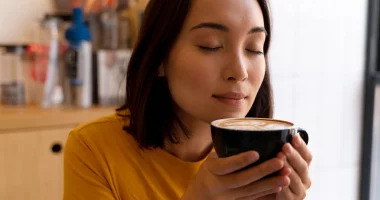Asthma is a long-lasting problem that makes it hard to breathe. It can happen to both kids and adults. Sometimes it comes and goes with the seasons or is caused by certain jobs.
When someone has asthma, the insides of their breathing tubes get inflamed and swollen. This makes it tough for air to go in and out of the lungs.
The breathing tubes get even tighter, making it really hard to breathe while asthma attacks a person. This can cause wheezing sounds.
In 2019, about 7.8% of the population in the United States was affected with asthma. There are lots of kinds of asthma, and different things can cause it or make an attack happen.
What is Asthma?
Asthma is a problem that stays with you for a long time and affects your breathing. It happens because the tubes in your lungs get swollen and narrow, which makes it hard to get enough air.
People with asthma might feel:
- Chest tightness
- Wheezing (which sounds like whistling when breathing)
- Having trouble catching their breath
- Coughing
- Making more mucus (the stuff you blow out of your nose or cough up)
When asthma gets really bad, it’s called an asthma attack. These can start suddenly and can be a little bit bad or life-threatening.
Sometimes, when the tubes in your lungs swell up a lot, they can stop oxygen from getting into your lungs. This means your body can’t get enough oxygen, which is really important for staying alive. So, if someone is having really bad asthma symptoms, they need to get help from a doctor right away.
Doctors can give medicines and advice to help people manage their asthma and feel better.
Types of Asthma
Asthma comes in different forms, but they often have similar triggers. These triggers can be allergens like pet dander or pollen, irritants like chemicals or smoke, exercise, other health issues, weather changes, certain treatments, or strong emotions.
Childhood asthma
Childhood asthma is quite common. Children can get it at any age, but it’s more common in them than in adults. A study in 2019 states that, about 10.8% of kids aged 12 to 14 had asthma. It affected about 9.1% of kids aged 5 to 14. Even adults can get asthma; about 8% of people 18 years and older develop it. Some common triggers for childhood asthma include colds, secondhand smoke, allergens like dust or pollution, and even excitement or stress. It’s really important to see a doctor if a child shows signs of asthma because it can be dangerous. While some kids outgrow it, many have it for life.
Adult-onset asthma
Adult-onset asthma is when adults develop asthma. There are different factors that can raise the chances of getting asthma as an adult, like previous respiratory problems, allergies, hormonal changes, stress, obesity, or smoking.
Occupational asthma
Occupational asthma happens when someone is exposed to something at work that triggers their asthma. About 1 in 6 cases of adult-onset asthma start because of work. And around 21% of adults with asthma find that their symptoms get worse while they’re working. Both outdoor and indoor jobs can contact individuals to asthma activators.
Hard-to-control or severe asthma
Some people have really hard-to-control or severe asthma. This could be because they’re not using their inhaler correctly or because their asthma doesn’t respond well to medicine, even at high doses. About 5-10% of people with asthma have severe asthma, and 3.6% have a type called refractory asthma, which doesn’t get better with treatment. There’s also a type called eosinophilic asthma, which can be severe and may need special treatments.
Seasonal asthma
Seasonal asthma happens when certain allergens are around at certain times of the year. For example, cold air in pollen or winter in spring and summer can make it harder to breathe. Some people only have symptoms during certain seasons, but they still have asthma all year long.
Asthma doesn’t always come from allergies, though. Sometimes, it’s just a problem with the lungs reacting to certain things.
Causes and triggers
Doctors aren’t exactly sure what leads to asthma, but they think both genes you’re born with and things in your environment can make it more likely you’ll have it.
Pregnancy
When a person is sensitive to something, like an allergen, it can cause asthma or make it worse. For example, smoking while pregnant might increase the chances of the baby having asthma later on. Also, being overweight can make asthma worse, and some people might not respond well to asthma medicines.
Allergies
Allergies can make asthma worse too. When your body reacts to something it’s allergic to, it can cause asthma symptoms. This is called allergic asthma, and it’s the most normal type.
Smoking
Smoking cigarettes can trigger asthma, and even being around someone who smokes can hurt your lungs. Air pollution, like smog or dust, can also make asthma worse.
Environmental factors
Inside your home, things like dust, mold, pet hair, and certain fumes can trigger asthma. Outside, pollen and pollution from cars can do the same.
Stress
Emotions like stress or strong feelings can make asthma symptoms show up too. Sometimes, asthma can be related to mental health issues like anxiety or depression.
Genetic factors
Your genes, or what you inherit from your parents, can also play a role in getting asthma. If single or both of your parents have asthma, you might be more likely to have it too.
Hormonal factors
Hormones, which are chemicals in your body, can also affect asthma. For example, women might notice their asthma gets worse during certain times of their menstrual cycle or during menopause. Hormones can change how your immune system works, which can affect asthma. Some people might only have asthma symptoms once in a while because of hormones.
Diagnosis of Asthma
When a doctor suspects asthma, they consider various factors, including the person’s symptoms, their medical history (both personal and family), and the results of specific tests.
The type of asthma a person has depends on what triggers their symptoms. Keeping track of symptoms and potential triggers at home, school, or work can help the doctor make an accurate diagnosis.
Physical Examination
During a physical exam, the doctor pays close attention to the chest, upper respiratory tract, and skin. They listen for wheezing, a common sign of asthma, and check for other indicators like a swollen nasal passages, runny nose, or skin conditions such as eczema or hives.
Asthma Tests
To assess lung function, the doctor may conduct lung function tests. The most common test for diagnosing asthma is spirometry. During this test, the person breathes deeply and then forcefully exhales into a tube connected to a spirometer. This machine measures how quickly and efficiently they can expel air from their lungs.
Asthma Treatment
The goal of treating asthma is to help people breathe better, have fewer asthma attacks, and participate in more activities without feeling limited. This involves working closely with healthcare professionals to develop a personalized treatment plan tailored to individual needs.
There are various treatment options available for managing asthma, and they continue to evolve and improve over time. These options include both quick-relief medications for immediate symptom relief and long-term control medications aimed at reducing the frequency and severity of asthma attacks when taken regularly
Asthma medications come in different forms and serve various purposes. Bronchodilators, which can be short-acting or long-acting, work by relaxing the muscles around the airways, making it easier to breathe. In cases of bacterial pneumonia or bronchitis, antibiotics may be prescribed to address the underlying infection.
Anti-inflammatory medications, like inhaled corticosteroids for ongoing maintenance or oral steroids for acute attacks, help to reduce airway inflammation and prevent asthma symptoms from worsening over time. Additionally, some medications combine bronchodilators with corticosteroids for a more comprehensive approach to asthma management.
It’s crucial for individuals with asthma to work closely with their healthcare providers to find the most effective treatment plan for their specific needs. Regular check-ups and open communication about symptoms and medication effectiveness can help ensure that the treatment remains appropriate and optimized for managing asthma symptoms effectively.
Exercise and Asthma
Even if you have exercise-induced bronchoconstriction, which used to be called exercise-induced asthma, it’s still important to exercise regularly. The American Lung Association (ALA) suggests that exercise can actually improve your lung function and overall health.
Before you begin a new exercise program, talk to your doctor. They can tell you which activities are safe for you. Sometimes, they might suggest avoiding certain exercises.
Most of the time, you can join in sports and physical activities as long as you manage your asthma with medication. To stay safe, consider these tips:
- Cover your nose and mouth in cold weather to avoid breathing in cold air, which can trigger asthma symptoms.
- Always warm up properly before exercising and cool down later.
- Stay inside when the air quality outside is poor.
If you feel any pain while exercising, stop and use your fast-acting inhaler. If your symptoms get worse, get in touch with your doctor right away. It’s important to listen to your body and not push yourself too hard.
Summary
Asthma is a chronic condition affecting the airways, causing breathing difficulties. It can develop in childhood or adulthood and may worsen due to triggers like allergies, smoking, or stress. Diagnosis involves considering symptoms, medical history, and tests like spirometry. Treatment aims to improve breathing and reduce attacks, often involving bronchodilators and anti-inflammatory medications.
Regular exercise, recommended even for exercise-induced bronchoconstriction, can enhance lung function but should be done cautiously, with a doctor’s guidance and attention to safety measures. Consulting a doctor promptly if symptoms worsen during exercise is crucial for managing asthma effectively.








